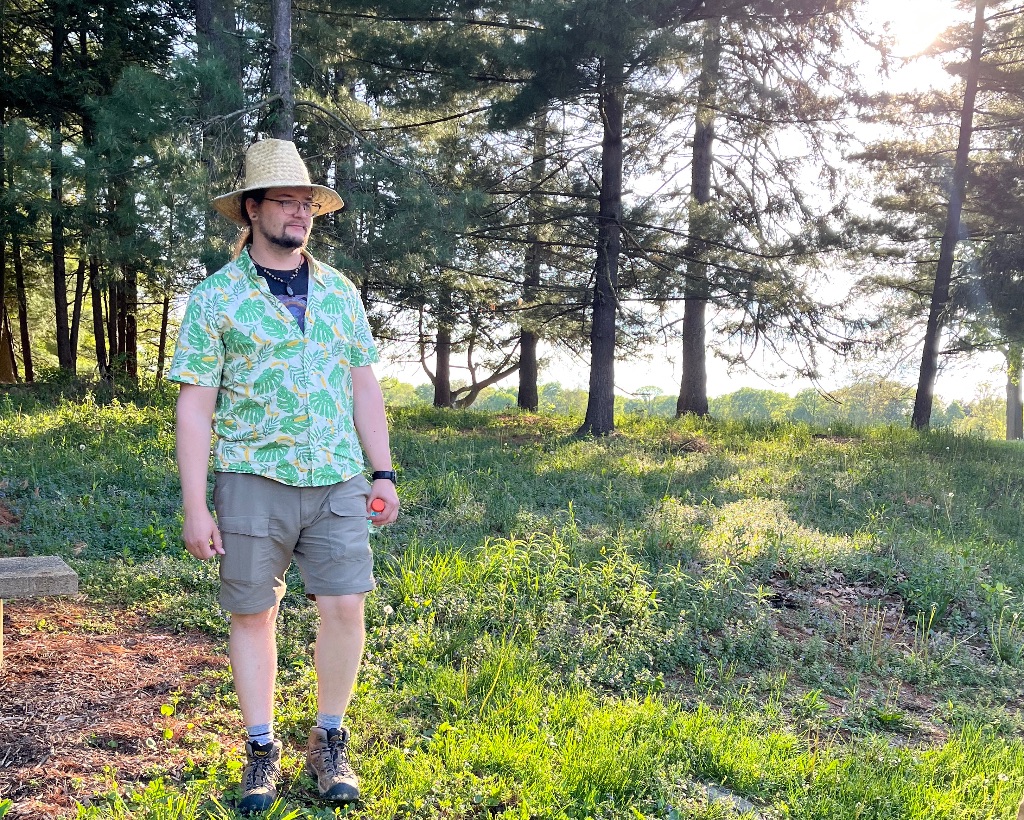When I saw that Allerton had selected Michael Baker as their first Naturalist-in-Residence and that he would be offering free foraging classes on the grounds, I signed up right away. I had never been foraging, but my nine year old daughter loves anything nature related, so off we went.
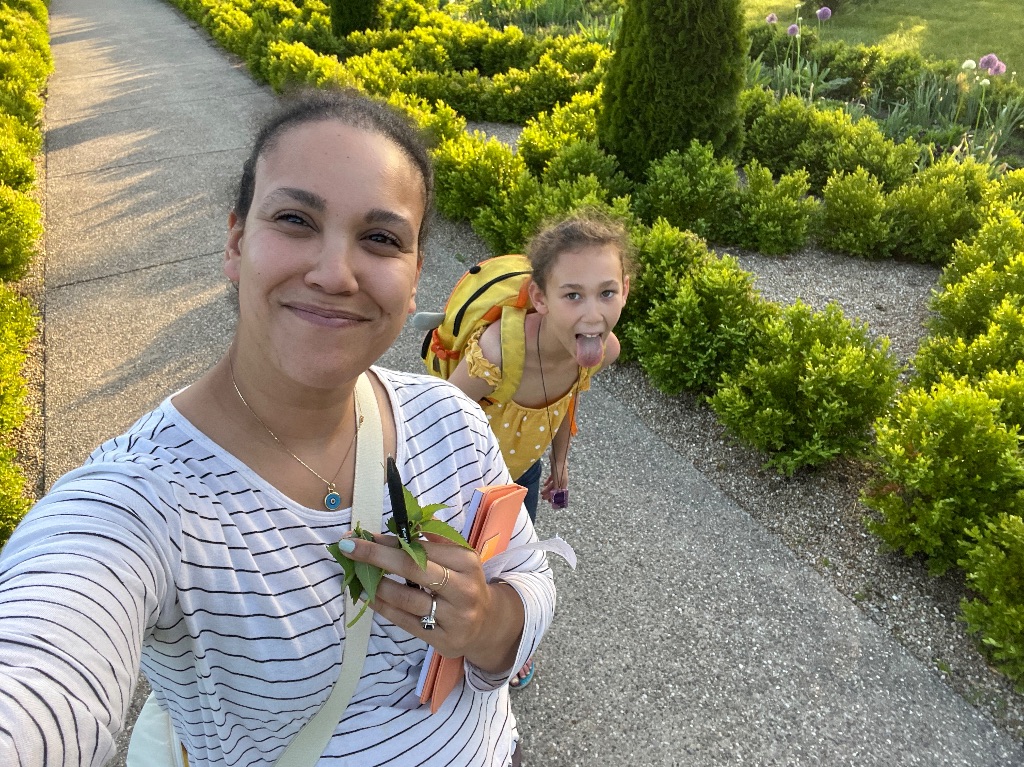
We met Baker at the visitors center along with another foraging enthusiast before beginning our walk. What I like about Baker is his approachability. While he is very knowledgable, he doesn’t claim to know everything about foraging. Instead he leans into his own curiosity, and encouraged us to do the same. This comes in very handy when a nine year old wants to identify and ask questions about every flower she sees.
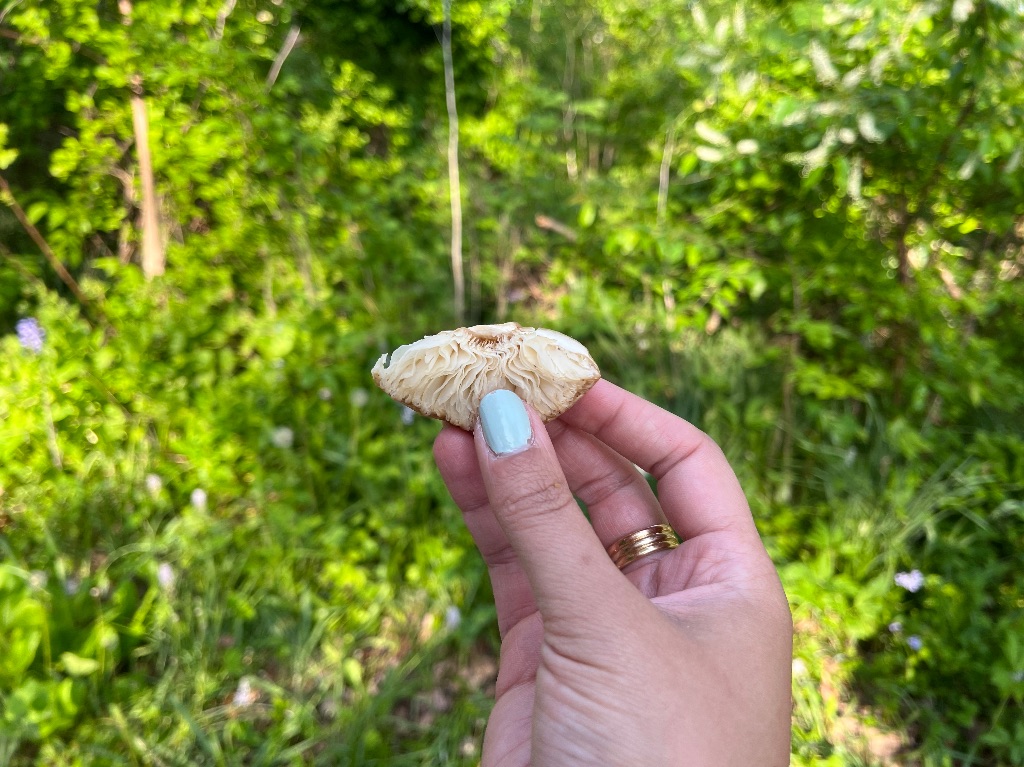
Throughout our two hour walk we were introduced to a variety of edible plants, from pine trees to flowers. While trying them, Baker would explain what flavor profile to expect and also shared how some of the bitter things we tried taste the way they do thanks to our modern diets (which focus more on salt and sugar). Baker also helped us to identify things like poison ivy and hemlock (which can look quite similar to carrots but is actually deadly). Throughout our walk and our interview a few days later, he made sure to reinforce that triple checking what you have foraged is the best way to not die while foraging. By the time this article comes out, Baker will have one more week of free foraging classes available. If you want to get some time outdoors and learn something new about the plants all around us, the schedule and sign up can be found here.
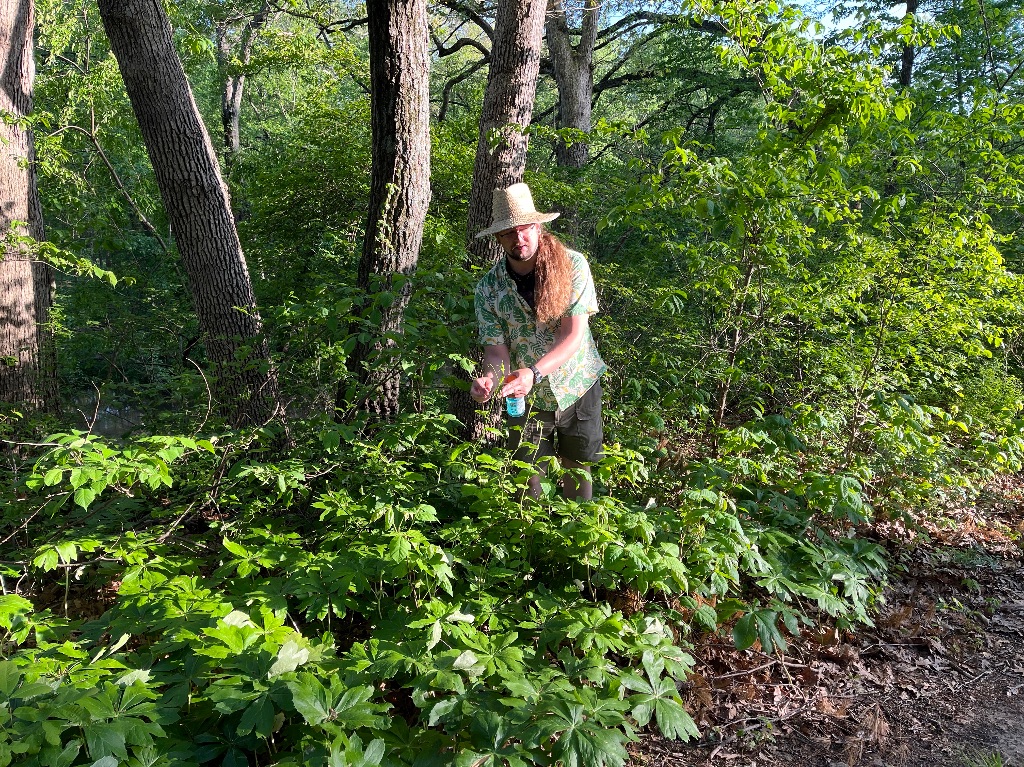
Smile Politely: Who are you and what do you do?
Michael Baker: My name is Michael Baker, I am a professional forager and podcaster (Wild Edible World). I live in the Chicago area and I am also starting a nonprofit, Remnant Roots, that is focusing on reclaiming and restoring empty lots to grow natural prairie ecosystems.
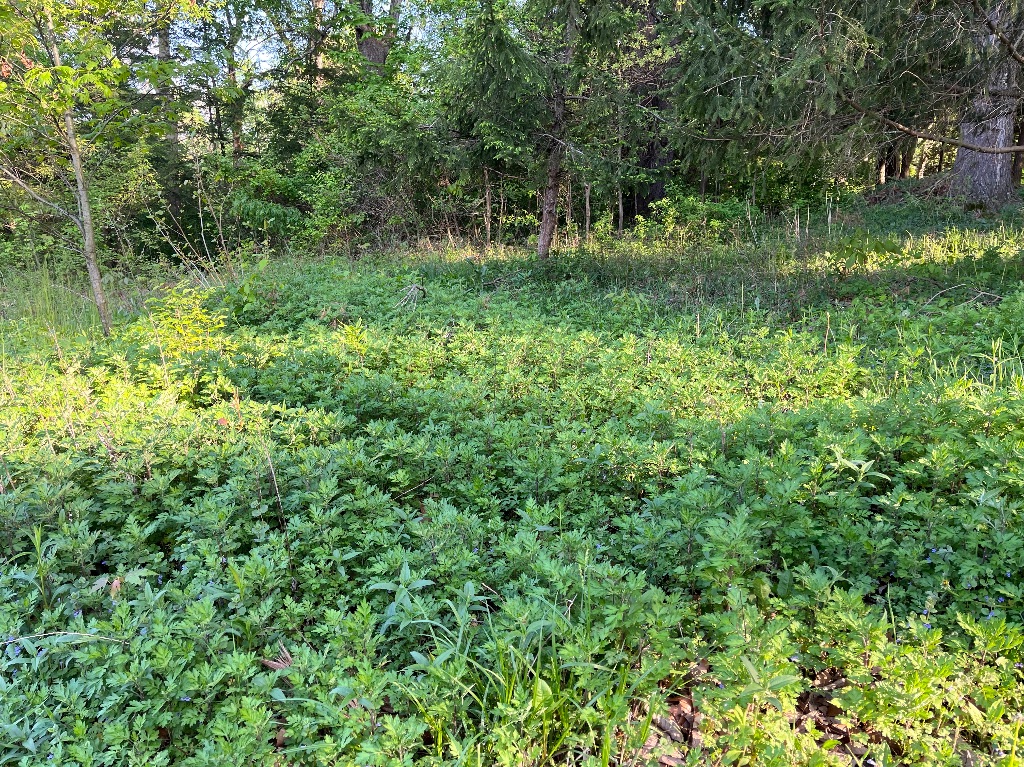
SP: How did you get into foraging?
Baker: There’s a lot of pieces to that puzzle. The smallest of seeds were planted in my childhood at summer camp when a counselor took us on a little walk and showed us edible red clover. I’ve also been foraging passively all my life, eating berries and wild onions. But when the pandemic happened in 2020 I think a lot of us started reconsidering where we acquire food. We had the space and time that forced us into thinking about things differently and the direction my life took me was in foraging. For me, it’s important to get outside as often as possible, gather plants, make sure that I know where [my food] comes from, and how many hands it has passed through in order to get me this product and how much environmental impact there is. When it comes to foraging, the answer is, almost no impact except my own footprints and most of the time the only hands that have touched this plant are mine.
SP: How much of your diet is foraged foods?
Baker: About 20%. I still drink beer and eat the occasional bratwurst, but I try to get out and collect daily. Especially while I’m here [at Allerton] I plan to make some drinks and maybe some food for people to try when they come to my foraging class.
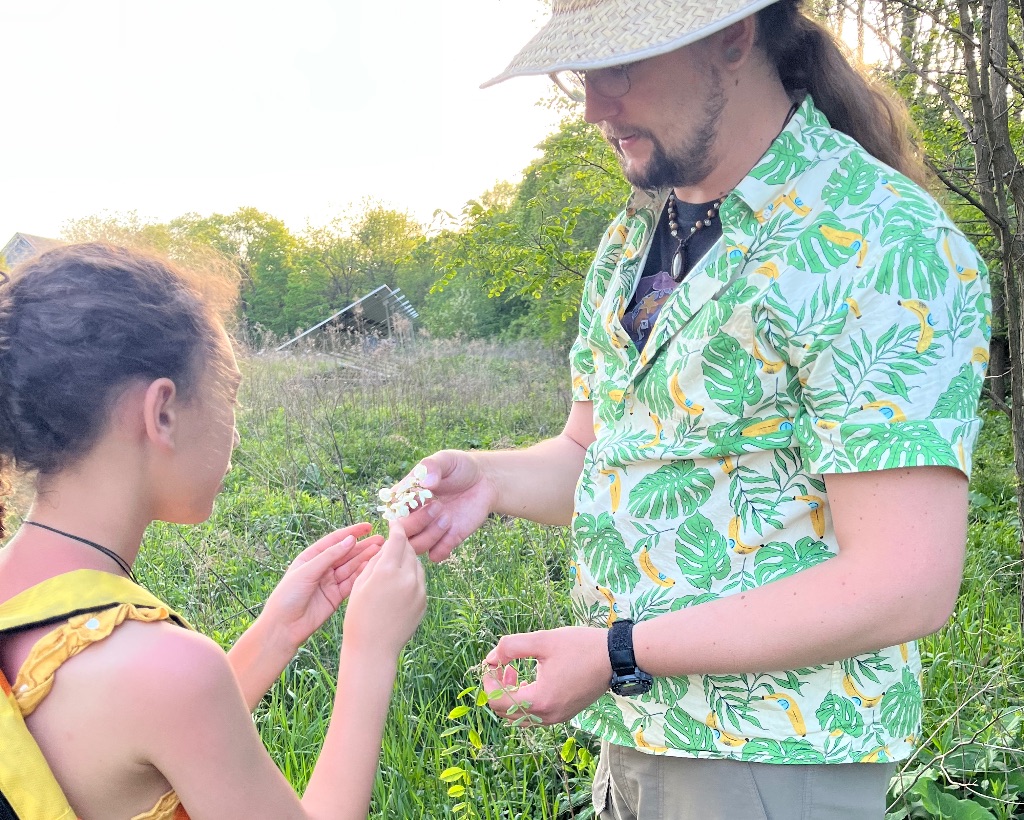
SP: How did your residency come to be?
Baker: I had started looking for artist residencies — even though I don’t really consider myself an artist— but then I changed my search to naturalist residencies, and Allerton was the first one to pop up. One of the requirements for my residency here is a lasting community impact. Mine will be educational materials for people to be able to teach themselves when I’m not here. I want people to be able to look at these plants and even though you cannot collect anything in the park, this place is an excellent resource to learn to identify basic botany.
SP: Foraging has deep roots among Indigenous people and other People of Color, do you have any BIPOC foragers you learn from or would recommend?
Baker: Absolutely, Alexis Nikole, online she’s known as the @blackforager. She really is awesome and incredibly knowledgeable and teaches classes in person. The Sioux Chef up in Minnesota, Sean Sherman owns the Owmni Restaurant and has a cookbook of Indigenous food practices, many of which have been lost to genocide. Indigenous people are still here and they are still eating those traditional foods, however the language is being lost. Linda Blackelk, is a Korean woman, married to an indigenous man and she does a lot of talks about how food is medicine.
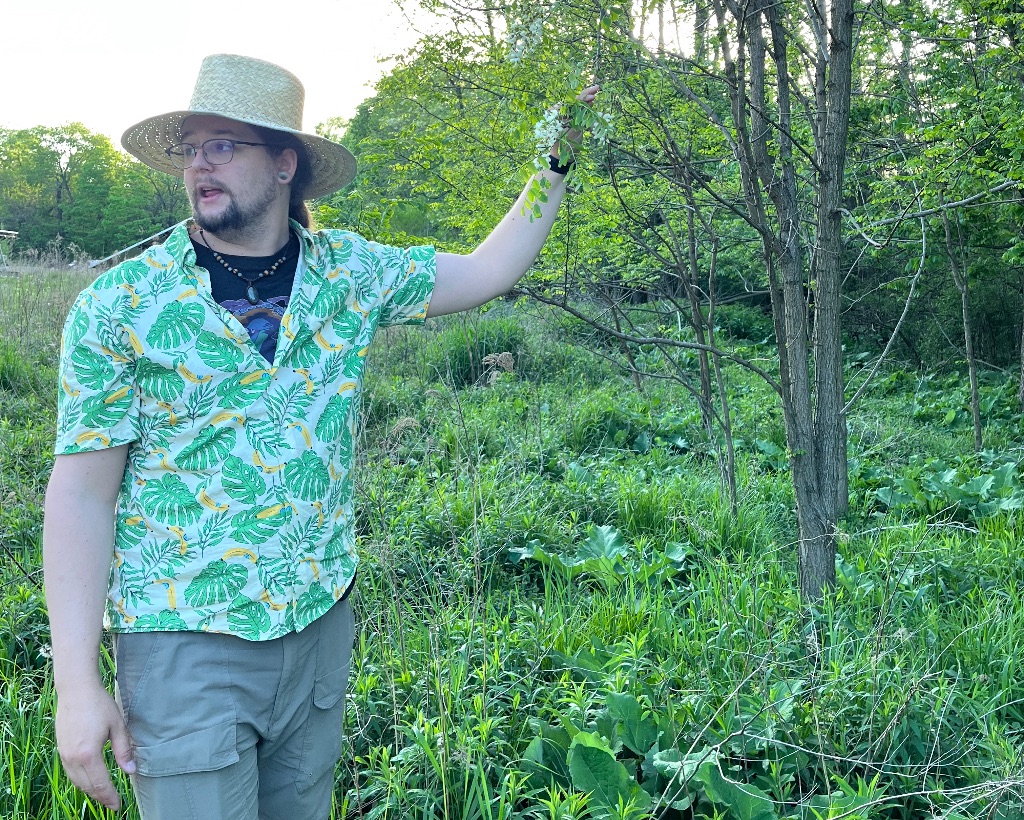
SP: What are your favorite foraged foods?
Baker: It’s usually, “What is available right now,” which is the mindset of a forager. But I won’t be so dry. My favorite mushroom is the Chanterelle. The Chicago area has its own species that is packed with flavor. My favorite berry is the Autumn Olive better known as the sparkle berry, an invasive species. They are tangy, cherry-like with a hint of sweetness and very ergonomic to collect. They ripen in the fall after other berries and they make an incredible fruit leather. My favorite plant right now is Greenbrier, it is really thorny at the bottom and has a tendriled praying mantis-like tip. It grows into the summer and it tastes like asparagus but better and smoother.
SP: Has climate change affected your foraging practice?
Baker: Absolutely. It’s making every single year more and more unpredictable. It does make things very difficult when it comes to mushroom season, we have certain expectations for the conditions that morels thrive in and every year springtime in Illinois is getting drier and drier. Even up in Minnesota and Wisconsin there have been more severe drought conditions every single year that affects foraging the same way it affects crops. A lot of the reason wild foraging is more sustainable in my opinion is because a lot of these plants are more drought tolerant but we’re still experiencing very similar difficulties.
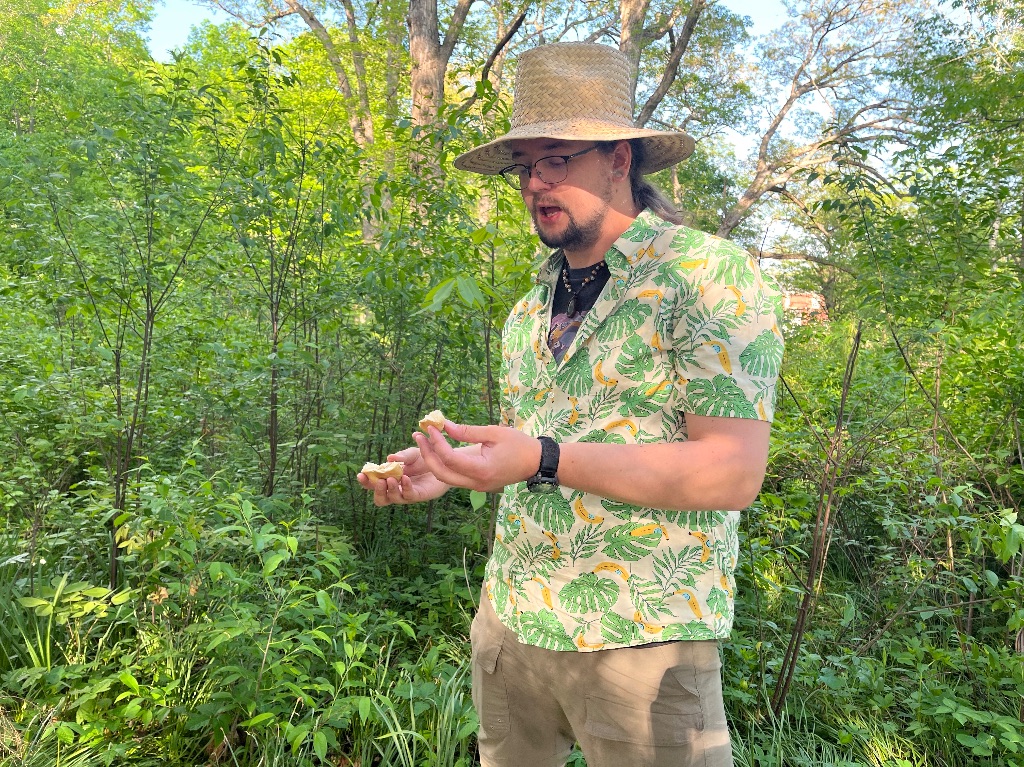
SP: Can you talk a little about the importance of community in the foraging world?
Baker: There is a misconception that foraging is destructive. We can address this with proper education, guidance, and cultural practice. We have to teach people how to harvest in a way that helps regenerate and create more food. We should be building that into how we teach people to forage. The way we get people to care about nature is through their stomachs, we need to get them outside, because building relationships with plants helps [people] care more. It’s a way to find common ground with other people.
SP: How can people start foraging?
Baker: Find someone online who is knowledgeable about it and is willing to teach. I try to make myself that kind of person. If I could recommend one plant to start with it would be the dandelion. It is one of the most ubiquitous plants on the entire planet. It is medicinal and is completely edible from top to bottom. There are lots of nuances to learn with it, and it’s a really safe one to start with. But always be 100% sure, start plant by plant, lean into that curiosity, and feed it. That’s how we keep that childhood curiosity alive.
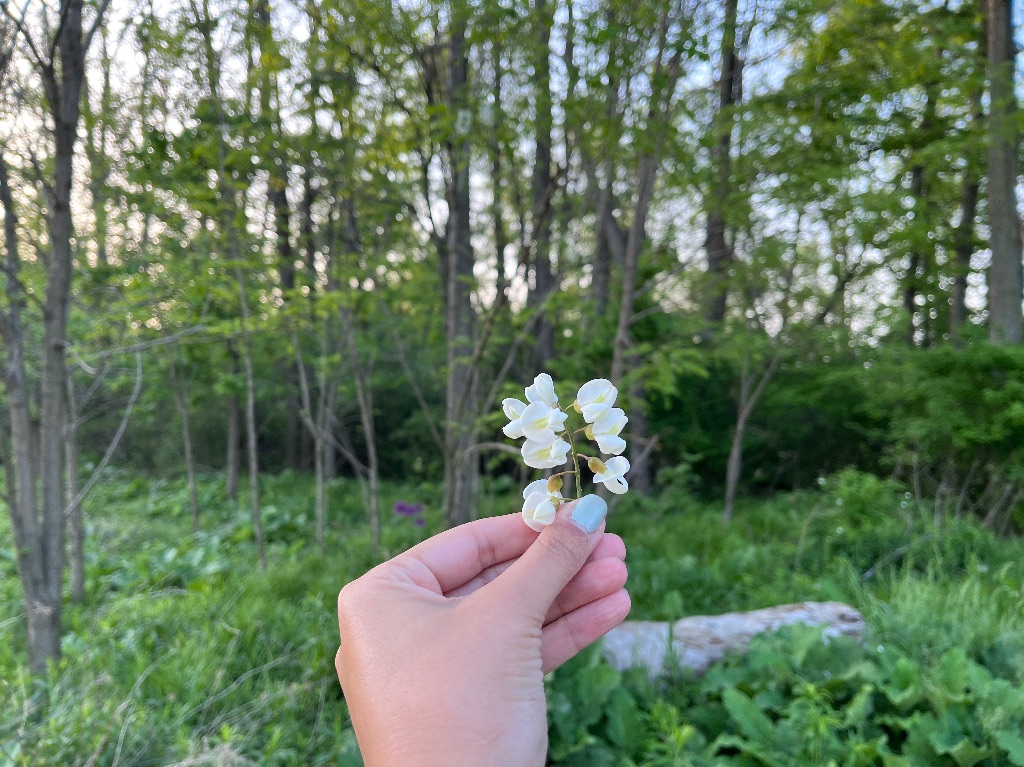
SP: Do you have a dream foraging destination outside of Illinois that you would love to forage?
Baker: I’m very interested in coastal Oregon. In the intertidal foraging stuff. With the salty landscape there are a lot of coastal plants that I would like to try, especially in the Pacific Northwest. They have Chanterelles bigger than your head, seaweed, salty briny beans that grow along the coast, clams (your proteins). It is kind of like the holy grail area. Although I would call the great lakes area one of the most important places for foraging in North America, which is why I love being here so much.
SP: Anything else?
Baker: I always like to end things by saying, always be triple sure of what you collect before you feed anyone you love, including yourself.








